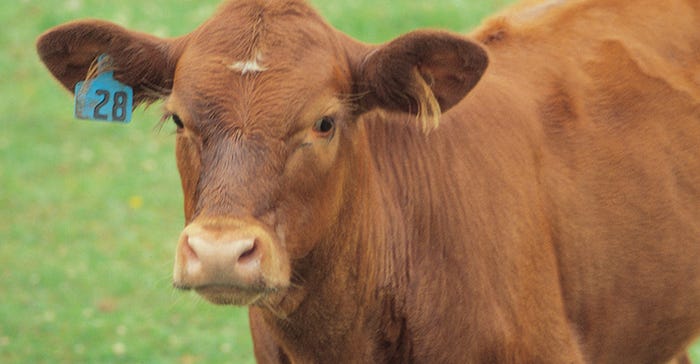Calf marketing decisions: Are there opportunities for increasing income?
Weaning is the most stressful event for the calf. Adding value to the calf crop is possible if affordable feedstuffs are available, weaning stress is minimized and a low-cost feeding system can be implemented.
September 22, 2017

Sponsored Content
The cow-calf producer is faced with the perpetual question of how to market the calf crop and maximize profit potential. The answer varies each year depending on the forage situation, management capabilities and current economics of the beef market. More calves are on the market with the expanded cowherd. On many operations calves are marketed at or shortly after weaning, and there is typically a glut of calves available in October and November which historically has the lowest calf prices of the year. Feeder cattle prices typically improve in the spring months compared to the seasonal low at weaning. What is required to hold calves to a later date, market them at a heavier weight, and increase the income per calf?

1. The ability to manage weaning stress.
• Weaning is the most stressful event for the calf. Can management changes be made to spread out the stress and avoid compounding the problem? A few ways to spread out the stress events are listed below.
- Low stress weaning methods such as fence line weaning and plastic nose tags to prevent nursing.
- Working calves prior to weaning for the first round of vaccinations, dehorning, castration, deworming etc.
- Creep feeding helps the calves adjust to dry feeds and weaning on pasture will avoid moving the calves immediately to a new environment.
• Facility limitations are often the reason producers decide to market at weaning. Pasture weaning and developing grass cattle is an option in some areas but for only a short time in the northern regions. A dry lot feeding plan is often needed. Basic calf-feeding facilities require easy access to feed and water and some protection from the weather.
2. Available feedstuffs and specifically forage availability.
• First and foremost, is there adequate forage (hay or stockpiled pasture) for the brood cows for fall and winter feeding? Grazing of crop residue is a viable option to extend the grazing season and reduce hay requirements for the cow herd.
• Are there available forage and economical feedstuffs for the calves? A forage based grower diet can produce acceptable gains while keeping total cost low by minimizing the amount of grain fed.
Managing weaning stress
Sel f-fed stress and weaning supplements are nutrient dense products that stimulate appetite and support calf health. Most calves are at the lowest trace mineral status at weaning because their diet of milk and grass has been relatively low in these nutrients. The trace minerals copper, zinc and selenium play critical roles in immune function and growth. It can take 2 to 3 weeks before all the animals are consuming the desired amount of the ration in the bunks. Self-fed nutritional supplements are highly palatable and readily consumed independent of the animal’s intake at the bunk.
f-fed stress and weaning supplements are nutrient dense products that stimulate appetite and support calf health. Most calves are at the lowest trace mineral status at weaning because their diet of milk and grass has been relatively low in these nutrients. The trace minerals copper, zinc and selenium play critical roles in immune function and growth. It can take 2 to 3 weeks before all the animals are consuming the desired amount of the ration in the bunks. Self-fed nutritional supplements are highly palatable and readily consumed independent of the animal’s intake at the bunk.
CRYSTALYX® Brand Supplements has several formulas that are great tools to help reduce weaning stress and supplement a forage based diet for both the cows and the calves. Research trials, field trials and years of customer experience have shown the convenience, labor savings and proven performance of these products. Adding value to the calf crop is possible if affordable feedstuffs are available, weaning stress is minimized and a low-cost feeding system can be implemented.
About the Author(s)
You May Also Like



